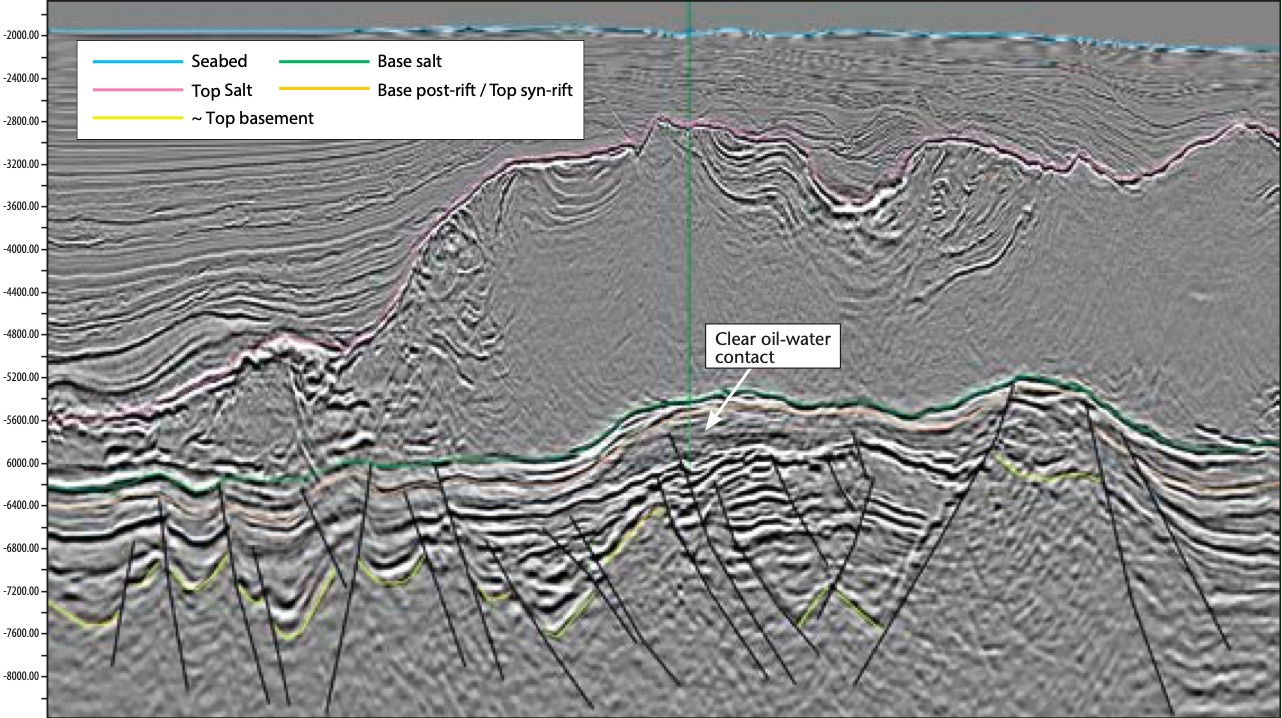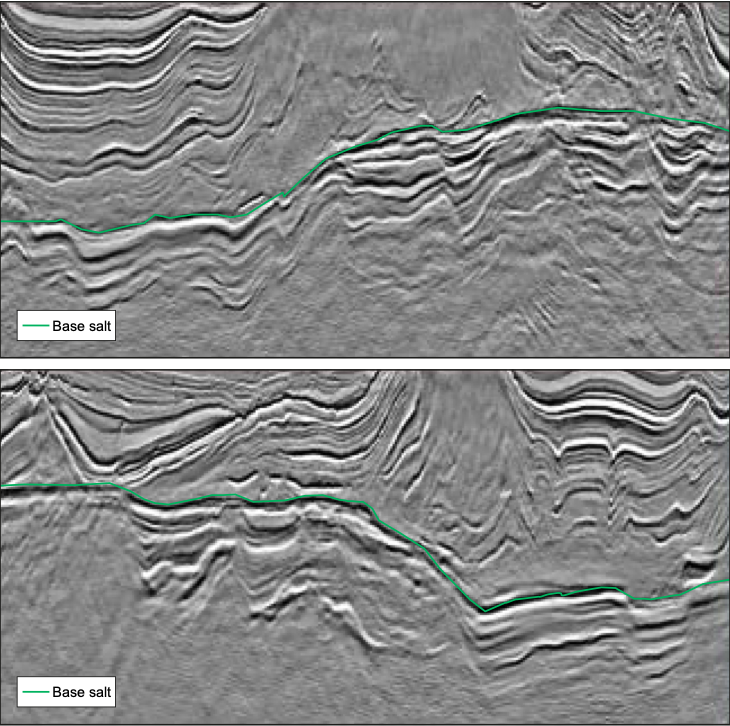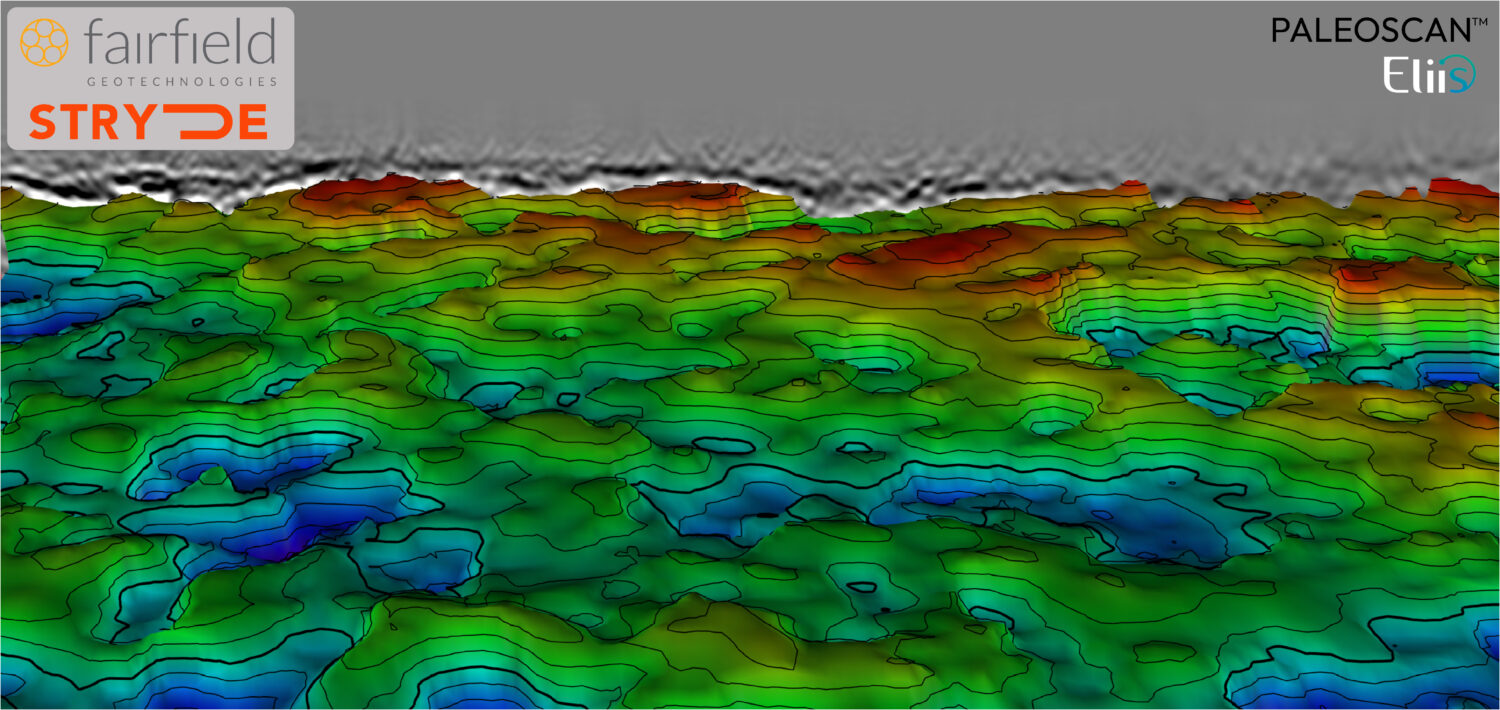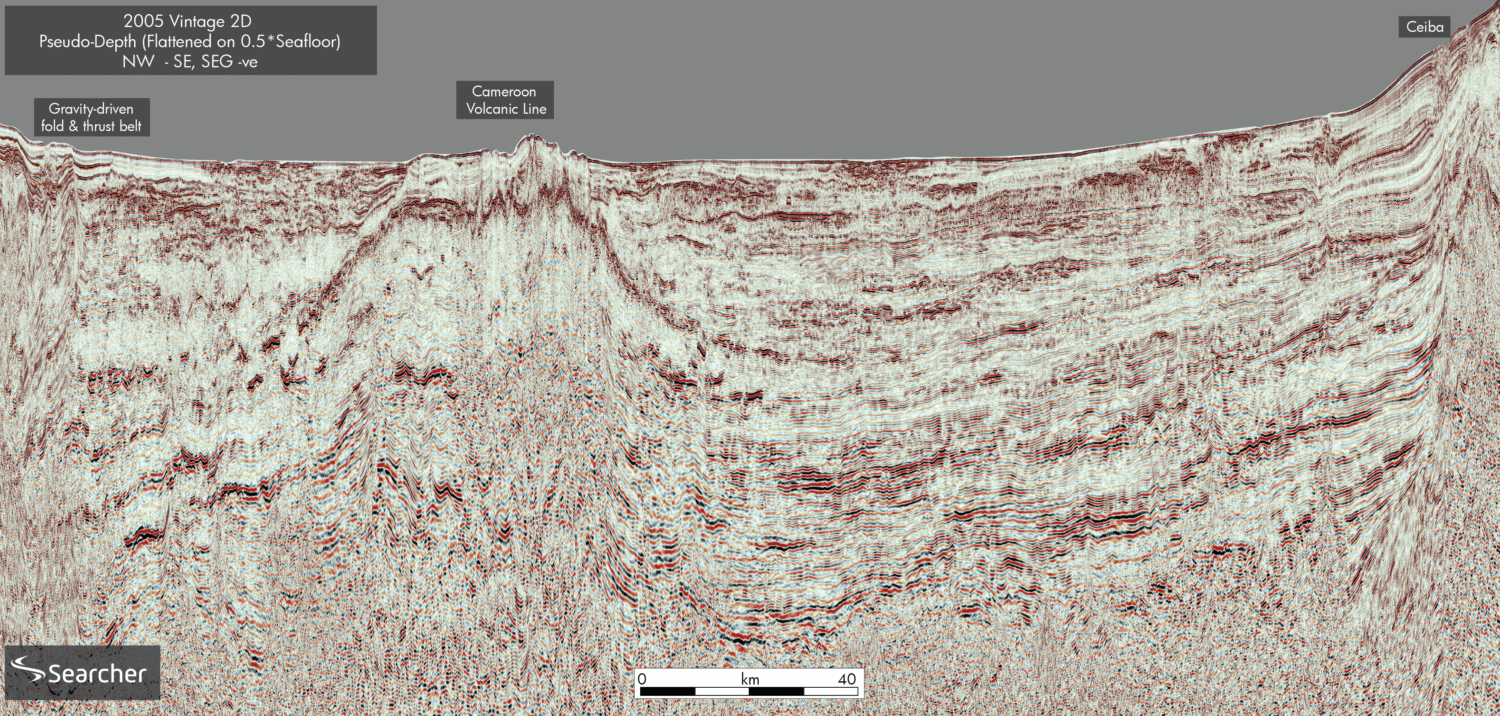
Broadband technology: New benefits for pre-salt exploration
CGG has acquired new conventional and broadband seismic data in the deepwater Santos Basin, creating exceptional results within the pre-salt.
Pre-salt reservoir targets within the Santos Basin have been a major focus for oil and gas exploration, with much consideration directed to the challenge of seismic imaging below thick and complex salt bodies. CGG’s broadband technology provides clearer imaging of the subsurface and therefore aids a better understanding of the petroleum systems. Data acquired using broadband technology is less impacted by tuning effects due to the broader bandwidths and sharper wavelets. The increase in low frequencies reduces side lobes to bring greater resolution and increase the texture and character of the data. Broadband data allows the interpreter to identify fine detail within the stratigraphic/structural features easily, in order to establish potential petroleum systems better.
The latest 3D data acquired by CGG provides new insights into the pre-salt section in the northern area of the Santos Basin. The examples used, from conventional and broadband data, have been taken from two of CGG’s multi- client surveys, Phase VI-A and Phase VI-B. Both datasets have been imaged using Kirchhoff Pre-Stack Depth Migration (PSDM), with the main difference being that Phase VI-A is conventional seismic data that has benefitted from a full anisotropic PSDM sequence while the Phase VI-B broadband seismic data is currently a fast-track isotropic volume.
Fields and discoveries
The Santos Basin displays great similarities to the adjacent prolific Campos Basin and is already considered as an important hydrocarbon province. In the past, the main exploration targets have been within the shallow post-salt successions. However, since the decision by Petrobras to explore below the salt and the discovery of the Lula oil field in 2006, interest has now turned towards the pre-salt. Lula has estimated reserves of 5-8 Bbo encountered in post-rift microbial carbonates. Subsequent to the Lula Field, the neighbouring Jupiter Field became a significant gas discovery in early 2008, with estimated reserves of up to 60 TCF. Smaller but significant fields have been established since Lula such as Sapinhoa (Guara) and Carioca. Other recent discoveries like Franco in the northern Santos have brought attention to the prolific syn-rift coquinas. Franco consists of a distinct hydrocarbon column through two mega sequences (the sag sequence and upper syn-rift). Reservoir properties tend to differ from north to south as one might expect in such a large basin. Continuous exploration has provided a better understanding of reservoir properties and characterization of petroleum systems.

Libra oil field
The pre-salt Libra discovery is covered by the Phase VI-A conventional seismic survey area. This discovery is located in water depths of 2,000m, approximately 200 km south of Rio de Janeiro. Libra is an elongated, north-east to south-west trending structure situated to the east of the Franco Field. The discovery well was drilled by Petrobras, on behalf of the Brazilian federal government, to test the pre-salt interval. Analogous reservoir parameters can be seen between Franco and Libra due to their similarities in depositional environ- ments and proximity to each other.

The Libra well encountered top reservoir within the highly prolific sag sequence at an approximate depth of 5,371m. The oil column is characterized by a strong increase in the resistivity log located within the upper syn-rift coquinas. Additionally, a distinct oil water contact can be observed from the seismic data, highlighted by a flat-lying increase in impedance (seen in the seismic section above). Continuous oil shows were recorded throughout the hydrocarbon-filled section, together with gas shows. This potentially large discovery differs from the giant Lula Field in the southern Santos due to the nature and extent of the hydrocarbons found: in Lula, the hydrocarbon- filled reservoirs are compartmentalized and trapped within intra-formational seals, whereas in Libra, there is one fairly continuous oil column spanning at least two mega-sequences. These observations highlight the differences between stratigraphy and reservoir properties across the basin.
Pre-salt potential
Similar pre-salt stratigraphy and structural features to the Libra discovery can be seen in the Phase VI-B broadband dataset, indicating high potential for petroleum discovery. The broadband technology used to acquire the survey has been deployed over a largely unexplored, unlicensed part of the pre-salt region. The survey also extends out into the Campos Basin towards the north-east, as seen in the map on the fold-out pages.
The Cabo Frio High extends across the middle of the Phase VI-B survey and is a prominent feature throughout the dataset. This high marks the northern boundary of the Santos Basin and the southern boundaryoftheCamposBasin.IncomparisontothemajorSugar Loaf High in the southern Santos Basin, where a large part of the post-rift sag sequence has been eroded, in the area covered by the broadband data it has been largely preserved. A clear, continuous post-rift sag sequence can be seen overlying a very thick syn-rift sequence. With the prospect of good reservoir properties within microbialite carbonates in the post-rift and coquina carbonates in the syn-rift, the potential is high for a similar discovery to Libra.

The syn-rift stratigraphy clearly thickens against fault planes that are easily identified with the new broadband data as definition of geological features and structures is improved due to the increase in low and high frequencies. The additional low frequencies give an envelope to the seismic signal that shapes the larger-scale impedance (or lithology) variations to improve layer differentiation and allow for a more confident correlation of sedimentary packages across fault planes.
With the upcoming Brazilian pre-salt licensing round, the northern part of the Santos Basin also emerges as a very promising area of interest. Large similarities have been witnessed in the Phase VI-B survey area, highlighting the great pre-salt potential still undiscovered within the Santos Basin. The benefits of broadband data, as shown on the left, allow more detailed images, thus helping to unlock the full potential of the Santos Basin.
References
Duval, G. (2012). How broadband can unlock the remaining hydrocarbon potential of the North Sea. First Break. 30 (12), 85–91.
Mann, J. and Rigg, J.W.D. (2012). New geological insights into the Santos Basin. GEO ExPro, Vol. 9, No. 1, 36–40




